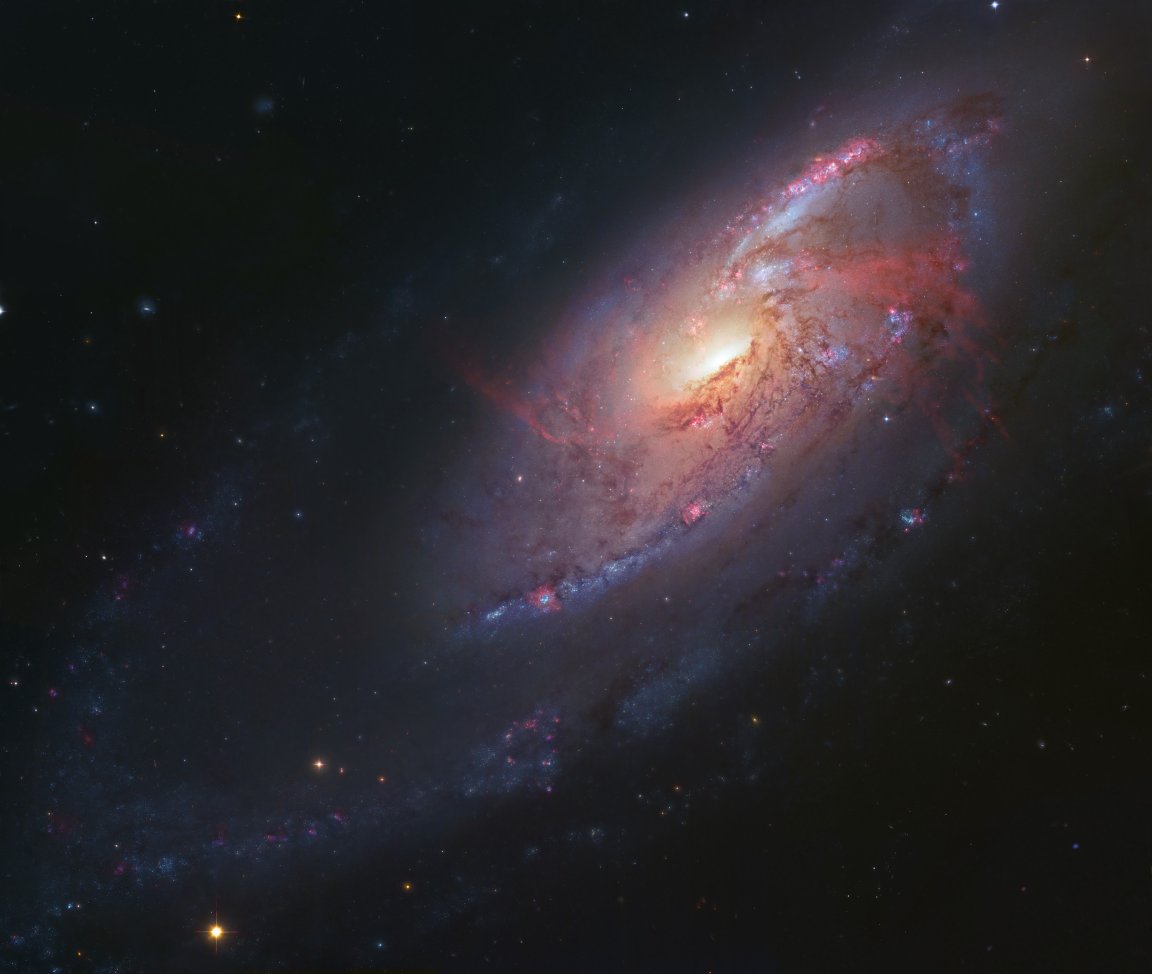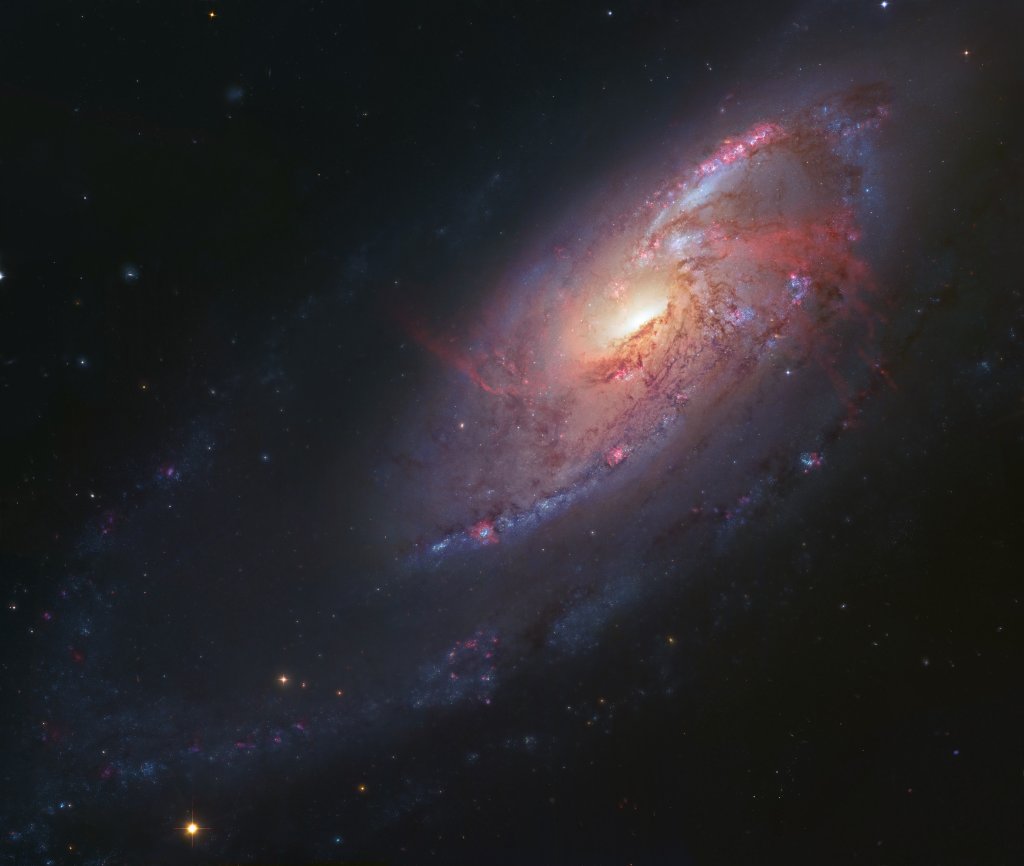

This is the spiral galaxy M106, also known as NGC 4258. We can find this stunning object in the constellation Canes Venatici and is located 23.5 million light-years from Earth.
This is the newest picture of M106, images here were captured primarily by the Hubble Space telescope, with a little help from ground-based astrophotographers Robert Gendler and Jay GaBany. All together, the image reveals a distance of space spanning 80,000 light-years.
Overall, M106 looks like a normal spiral galaxy. You can make out defined spiral arms, typically dark dust lanes, blue star clusters containing some of the youngest stars in the galaxy, and pink star-forming nebula containing the youngest stellar additions. Upon closer examination, you also notice to reddish spiral arms that appear different from the rest of the galaxy. These are called anomalous arms and will require a bit of back ground to explain.
Of course, one of the first things you probably noticed about the image was the galactic nucleus, at the center of which lies a supermassive black hole. As you (hopefully) know, all large galaxies have a supermassive black hole at its core. The one sitting in the center of the Milky Way has a mass about 4 million times greater than the sun (or, 4-million solar masses). Our supermassive black hole pales in comparison to the one at the heart of M106 – which is about 30-million solar masses. This black hole is also extremely active, consuming vast amounts of matter. As material falls into a black hole, it creates an accretion disk. This disk is superheated by tidal stresses and is super heated. As a result, material and radiation is flung back into space in two polar jets.
In the case of M106, these jets are at a 30 degree angle in relation to the galactic plane. Here, these jets slam into material on its way into interstellar space. This interaction heats up the encountered material and propels it off into wild blue yonder… or, wild black yonder as the case may be. This interaction forms these anomalous arms.
Even though this galaxy isn’t exactly the kind of place you’d want to go vacationing, it provides scientists with an invaluable glimpse into active galaxies. After all, cosmologically speaking, 23.5 million light-years is practically next door, or at the end of the street. Astronomers are able to get a detailed look at an active galaxy, which will help refine our knowledge of the more distant ones we observe.
For a larger image, see here.